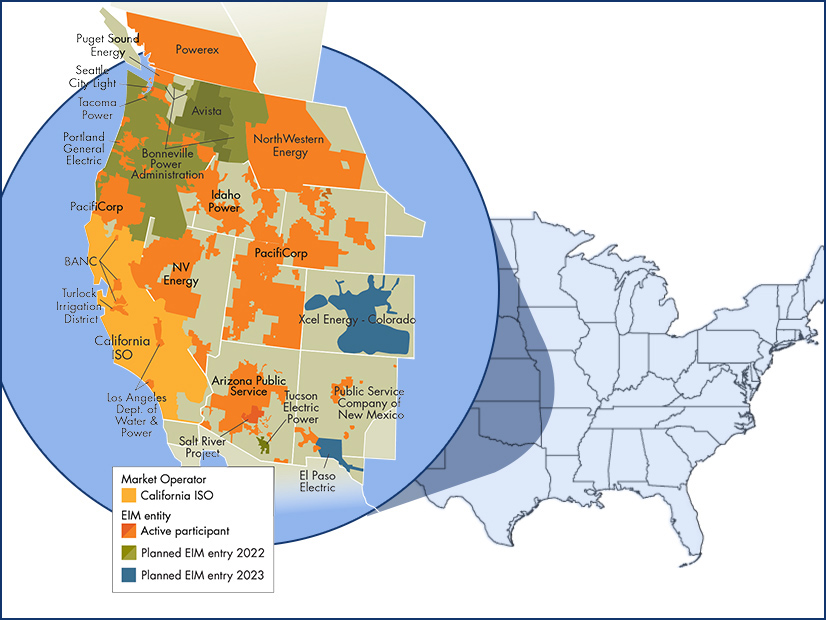The Western Energy Imbalance Market’s Governing Body approved the admission of “sub-entity” participants Wednesday, allowing utilities within the balancing authority area of a main WEIM participant to schedule and settle loads and resources independently.
The decision, which fell under the Governing Body’s primary approval authority in its shared authority with CAISO, was part of CAISO’s efforts to bring Xcel Energy’s Public Service Company of Colorado (PSCo) back to the WEIM.
In December 2019, PSCo said it would join the WEIM along with three utilities in its BAA — Black Hills Colorado Electric, Colorado Springs Utilities (CSU) and Platte River Power Authority — under a joint-dispatch agreement.
But in June, PSCo announced it was putting its WEIM plans on hold after CSU decided instead to join SPP’s Western Energy Imbalance Service (WEIS), with the intention of becoming a full RTO member. (See Xcel Delays Joining EIM to Examine Options.)
CAISO has been working with PSCo to convince it, along with Black Hills and Platte River, to join the WEIM.
Establishing sub-entity scheduling coordinators could bolster that effort, CAISO Vice President of Market Policy and Performance Anna McKenna wrote in her memo to the WEIM Governing Body.
“In addition to being applicable throughout the EIM, the EIM sub-entity category is an important provision for implementing the Public Service of Colorado balancing authority area into the EIM,” McKenna said. “The proposal allows PSCo to preserve the existing commercial arrangements that most of the various utilities in its balancing authority area operate under.”
CAISO’s plan to allow sub-entities “to settle load imbalances directly with the ISO” defines a load zone for each sub-entity. The EIM sub-entities would then submit base schedules for their load directly to the ISO, McKenna wrote.
“Base schedules are the load and supply schedules that reflect EIM participants’ planned operation and are used as the baseline against which imbalance energy is settled in the EIM,” she explained.
“The ISO will model each sub-entity’s load in the market as a customized distributed load aggregation point,” McKenna said. “This will enable the ISO to use existing practices to settle directly with the sub-entity.”
CAISO management proposed, and the Governing Body agreed, that the EIM sub-entities should be limited to those that are electric utilities embedded within an EIM entity balancing authority area that “do not receive long-term wholesale full requirements services from the EIM Entity.”
Eligible sub-entities must own distribution or transmission lines directly connected to the transmission system of the EIM entity “for the purpose of providing regulated electric service to eligible retail or wholesale customers.” They can also be a public utility that owns customer-serving resources, the CAISO plan said.
“Establishment as an EIM sub-entity is subject to the approval of the EIM entity that operates the balancing authority area in which the potential sub-entity is located,” McKenna wrote.
Stakeholders generally supported the plan, though some voiced concerns about introducing complications and confusion into the WEIM’s real-time interstate trading market.
The five members of the Governing Body unanimously endorsed the proposal.


